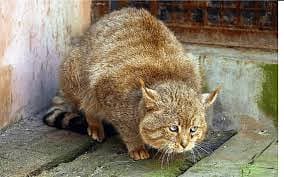Tibetan vs Siamese
Discover the differences between Tibetan and Siamese to make the best choice for your situation.
Try different breeds

Tibetan
Affectionate, adaptable, and social, the Tibetan forms strong bonds with family and thrives in calm households. Its plush coat and expressive eyes add to its gentle charm.

Siamese
Striking blue eyes and a sleek, short coat set this affectionate breed apart. Social, vocal, and playful, Siamese cats thrive on companionship and interaction.
Quick comparison
Medium
4–6 kg
Semi-longhaired, silky
12–16 years
3–5 kg
Moderately active
Medium
3.5–5.5 kg
Shorthaired, fine-textured
12–16 years
2.5–4.5 kg
High energy
Personality & behavior
Compare the personality traits and behavioral characteristics of both breeds.
Tibetan
Gentle and sociable with family and visitors
Learns routines and problem-solves quickly
Moderate activity, enjoys interactive playtime
Likes games and engaging with toys
Adjusts well to changes in environment
Siamese
Enjoys people and bonds closely with owners
Learns quickly and solves puzzles with ease
Highly active and thrives on daily activity
Loves games and interactive play sessions
Adjusts well to new environments and changes
Care needs
Exercise, grooming, and daily care requirements
Tibetan
Polycystic kidney disease, respiratory issues
Siamese
Progressive retinal atrophy, respiratory issues
Suitability
How well each breed fits different living situations and families
Tibetan
Good choice
Tibetan cats are gentle and adapt well to new owners with basic guidance.
Very suitable
Their moderate activity level and calm nature suit apartment environments well.
Well suited
They enjoy interactive play and can match an energetic household’s pace.
Friendly companion
Patient and tolerant, they usually behave well with respectful young children.
Usually compatible
Tibetans are sociable and often get along with other friendly pets.
Not ideal
They crave human company and may become lonely if left alone for long periods.
Siamese
Good option
Affectionate and social, Siamese cats are generally easy for beginners to understand
Excellent fit
Their playful nature suits smaller spaces as long as they receive enough attention
Highly suitable
They enjoy interactive play and thrive in active, engaging environments
Usually good
Siamese cats are social but may be sensitive to rough handling by very young children
Works well
They often get along with other pets if introduced properly and given attention
Not recommended
Siamese cats become lonely and stressed if left alone for extended periods
Breed strengths
What each breed excels at and their best qualities
Tibetan
- Affectionate with family members
- Adaptable to various living environments
- Generally healthy with few genetic issues
- Social and enjoys human interaction
- Intelligent and quick to learn routines
Siamese
- Affectionate and bonds closely with owners
- Highly intelligent and quick to learn
- Social and enjoys interactive play
- Communicates needs with distinct vocalizations
- Sleek, low-shedding coat requires minimal grooming
Challenges & considerations
Potential challenges and considerations for each breed
Tibetan
- Prone to separation anxiety if left alone
- May become bored without mental stimulation
- Requires regular grooming to prevent matting
- Can be vocal when seeking attention
- Sensitive to changes in household routine
Siamese
- Prone to separation anxiety if left alone
- Can be overly vocal and demanding
- Sensitive to changes in environment or routine
- Needs frequent mental and physical stimulation
- Susceptible to dental and respiratory health issues
Ready to choose your perfect breed?
Learn more about each breed or compare other breeds to find the perfect match for your lifestyle.
Discover more helpful tools
Make use of our other free tools to get the most out of your pet experience
